Respiratory physician Lutz Beckert considers chronic obstructive pulmonary disease management, including the prevention of COPD, the importance of smoking cessation and pulmonary rehabilitation, and the lifesaving potential of addressing treatable traits. He also discusses the logic of inhaler therapy, moving from single therapy to dual and triple therapy when indicated, as well as other aspects of management
Commitment issues - DHB and general practice disconnect in Taranaki
Commitment issues - DHB and general practice disconnect in Taranaki

We are on our summer break and the editorial office is closed until 17 January. In the meantime, please enjoy our Summer Hiatus series, an eclectic mix from our news and clinical archives and articles from The Conversation throughout the year. This article was first published in the 29 September edition
In October 2020, New Zealand Doctor Rata Aotearoa journalist Zahra Shahtahmasebi hit the road and headed for Taranaki with one simple objective – to visit healthcare providers around the mountain and see what they’re up to. She found herself in the midst of an imploding relationship between the DHB and local practices
Most New Zealand primary care is delivered by privately owned general practices under the PHO Services Agreement. Exceptions include:
- PHO-owned practices. These have tended to be pragmatic “purchases of last resort”, for example, when a GP wanting to retire has been unable to sell their practice.
- DHB-owned practices. West Coast DHB purchased four of the seven practices on the West Coast when GP owners retired over 15 years ago. All seven practices, both DHB and independently owned, belong to West Coast PHO and all work within agreement.
- Hawke’s Bay DHB bought two of the three Wairoa practices due to GP owners closing their practices, preventing the PHO from purchasing them. The DHB withdrew ownership in late 2019 and the third practice has now taken over all three practice caseloads.
- DHB as de facto PHO. This is the case in South Canterbury after the general practices passed a vote of no confidence in Aoraki PHO. South Canterbury has a primary care arm that contracts directly with the privately owned practices, in line with the agreement.
Plans were announced rather than negotiated, even though the process was called a negotiation
It was a hot October day when I arrived in Hāwera in late 2020. After meeting local independent GP Keith Blayney and iwi-owned practice Ngāti Ruanui Healthcare general manager Graham Young, my third and final stop for the day was the hospital on the other side of town.
It doesn’t take long to get from one side of Hāwera to the other – a fiveminute drive, if that.
I was greeted by rural hospital doctor Rory Kennelly. We talked about rural hospital work. He told me it is terrifying and exhilarating, with services that are under-resourced and under-staffed.
On that note, he segued into the DHB’s plan to mitigate the region’s ongoing GP drought by establishing its own new general practice at the hospital. Known as The Practice, it was to be “soft launched” in November, he said, and would see patients casually, before starting to enrol people within the following couple of months.
Primarily nurse led, the clinic would be staffed by two nurse practitioners, one NP intern and two part-time GPs (himself and colleague Tom Dawson, both dual Fellows in rural hospital medicine and general practice).
Chronic health workforce shortages in rural areas are no secret, but South Taranaki seems to be an area struggling more than most.
Hāwera, with a population of between 10,000 and 11,000, is served by three general practices. As well as the two I had visited – solo GP Dr Blayney and iwi health service Ngāti Ruanui Healthcare – there is also Mountainview Medical.
According to data from Taranaki DHB, “non-urgent” day-time presentations at Hāwera Hospital’s emergency department were constantly on the rise. South Taranaki was seeing 600 presentations per 1000 population each year in the ED, compared with 360 and 310 in central and north Taranaki respectively.
Patients reported being unable to book same-day appointments at their local general practice.
The DHB, PHO and local providers all seemed to agree that increasing primary care capacity and improving workforce recruitment and retention in the region was a high priority.
Back in Auckland, I wrote about my travels around Taranaki health, including an article about The Practice.
A furore ensued.
At its heart, it concerned the impact that a DHB-funded practice would have on existing practices that were already struggling.
And why the DHB set up its own solution and health minister Andrew Little approved it.
In a health system set on greater collaboration between primary and secondary care, this move appeared to send all the wrong signals, right from the top.
In June 2021, New Zealand Doctor Rata Aotearoa filed an Official Information Act request to the Ministry of Health and the health minister’s office to obtain correspondence and reports related to the decision to set up the DHB-funded general practice.
The resulting 300-plus pages of letters, emails and other communications between Taranaki DHB, Pinnacle Midlands Health Network and the ministry include numerous accusations, inaccuracies and hostility.
It was in early 2018 when Taranaki DHB first put out a Request for Proposals for an integrated primary and urgent-care health service.
Ngāti Ruanui and Pinnacle each put up proposals, both regarded as having strengths, but neither demonstrating an “integrated solution”, the DHB concluded. Back to the drawing board.
The DHB pitched a new plan in June 2019 – non-urgent patients, it said, were to be redirected from the Hāwera Hospital ED to their local GP, thereby freeing up ED to manage those who were acutely unwell.
Local practices said they would be unable to meet this increased workload.
Come September, Taranaki DHB portfolio manager Greg Sheffield put forward another proposal to the ministry, this time for a new rural model of care for South Taranaki, which included establishing a primary care service at Hāwera Hospital.
After looking at similar models nationally and internationally, the DHB was confident of this new model, which would include a walk-in and after-hours service – long lacking in the district. (Hāwera residents were often travelling for urgent care to Whanganui or New Plymouth, both an hour’s drive away.)
It was acknowledged in Mr Sheffield’s plan that the service would require considerable effort to deliver, especially as the DHB did not typically provide primary care.
The plan states the DHB had been engaging regularly with Pinnacle, local iwi-based services, the South Taranaki Community Health Forum and the public. Engagement had been positive, but further communication and engagement strategies would need to be carefully considered.
Mountainview Medical GP Marlene Bezuidenhout has no evidence of those strategies ever being carried out. Mountainview was never part of any codesign process with Taranaki DHB, says Dr Bezuidenhout.
When the DHB announced the proposal for a new model of care at a public meeting nearly a week later on 26 November, any concerns, views and suggestions she and her colleagues raised were repeatedly ignored, she says.
Mountainview’s practice manager Megan Te Ahuahu adds there was no consultation, and plans were well under way before providers knew anything was happening.
“Plans were announced rather than negotiated, even though the process was called a negotiation.”
Apparently unperturbed, Taranaki DHB pressed on.
In June 2020, emails between chief executive Rosemary Clements and ministry staff discuss “next steps”, including having The Practice up and running by that September.
Ministry chief advisor DHB performance, support and infrastructure Stuart Powell wrote to Ms Clements that he was pleased to see the DHB “putting a clear stake in the ground” around a quality service for the community.
But Mr Powell maintained stability is critical: “I remain really interested in how all the stakeholders will respond/ operate over the next 12–24 months and I think your DHB’s close leadership and responsiveness will be critical for quite a while.”
A memorandum sent by Ms Clements to deputy director-general DHB performance and support Robyn Shearer on 15 January 2021, provides a timeline.
From July to November, the DHB held meetings with local practices: Coastal Care in Ōpunake 40km northwest of Hāwera, Ngāti Ruanui Healthcare and Mountainview Medical in Hāwera, and Eltham Health Centre in Eltham (20km north of Hāwera). A community and primary care provider workshop was also held.
The purpose of these meetings was to “discuss service development and consider ways to work together”.
Initially, Coastal Care suggested it might be able to offer a solution to support a walk-in clinic at Hāwera Hospital, but this never eventuated, for “a range of reasons”, including capacity challenges, writes Ms Clements.
Both Ngāti Ruanui and Mountainview Medical confirmed they would be unable to accept redirection of patients from ED due to capacity.
Ms Clements’ memo notes that Ngāti Ruanui iwi chief executive Debbie Ngarewa-Packer had expressed support for the new model, albeit with “some caution”, given doctor recruitment issues nationally.
Next, the Taranaki DHB applied to Pinnacle for a PHO contract, and was turned down.
A meeting on 10 November between Pinnacle leadership, Ms Clements and DHB chair Cassandra Crowley did not go well. According to a letter written to the DHB on 18 November, by Pinnacle deputy chair Brendon Eade and independent chair Craig McFarlane, the meeting was fuelled by “petty accusations” and an absence of both collaboration and clarity.
The two said the meeting agenda had been manipulated to present no alternative solutions, other than what the DHB wanted.
“This was confirmed when, as you left, we were advised that the new hospital-based practice was opening this week anyway.”
The Pinnacle directors were also bemused by statements such as that Taranaki GPs are less sophisticated than other GPs, because they overprescribe “downers”.
Dr Eade and Mr McFarlane say in their letter the PHO wanted to move forward in a spirit of partnership, but the DHB’s proposal had been presented as a fait accompli, with no evidence of collaboration with anyone else in South Taranaki.
The Practice’s soft launch went ahead on 16 November 2020, making free appointments available to patients presenting at Hāwera’s ED who met criteria for a primary care assessment.
No public communication about the launch was made. The DHB was awaiting feedback from the ministry on the new model of care.
In the absence of a PHO contract, and wanting to operate a general practice and charge copayments, the DHB sought a change to its Crown Funding Agreement. This needed the minister’s approval.
On 8 January 2021, Taranaki DHB general manager planning, funding and population health Becky Jenkins wrote to South Taranaki general practice teams, and Pinnacle chief executive Helen Parker and deputy chief executive Justin Butcher.
Ms Jenkins said she wanted to update on The Practice, which had been operating for nearly two months, and to apologise for a delay in communication while the DHB awaited word from the ministry.
That same day, Dr Eade and Mr McFarlane sent a letter to health minister Andrew Little, mentioning Pinnacle had worked well with Taranaki DHB, other health providers and the community to develop services and different models of care.
Despite this good-faith collaboration, the DHB had decided on its own that the right solution for South Taranaki was for DHB-run primary care, they said.
The application for a PHO contract had been received only two weeks before the DHB planned to open its practice. The reason it was knocked back was lack of consultation and co-design.
Pinnacle also believed DHB and PHO data suggested The Practice would not address the current need well.
Dr Eade and Mr McFarlane wrote of a lack of leadership and transparency over consultation fees; patients being “pawns in a political game”; and the DHB exerting power and control for “its own ends”. The Pinnacle leaders added that the DHB’s behaviour was “frankly deplorable”.
“We feel strongly that this ad hoc and siloed development of DHB-provided primary care sets a dangerous precedent for undermining the sustainability of New Zealand’s primary health care.” Mr Little has not responded to this letter.
The DHB’s Ms Clements came to her organisation’s defence in her 15 January memorandum to Ms Shearer at the ministry.
Ms Clements refers to inaccuracies in Dr Eade and Mr McFarlane’s letter. She says adding the model challenges the status quo, but the district’s unique needs require a “different approach”.
In The Practice’s first five weeks, it took on 56 per cent of the patients who had presented at Hāwera Hospital ED.
Asked why they didn’t see their own GP, 35 per cent couldn’t get a “timely” appointment, 2.8 per cent saw the hospital as more convenient, and 0.7 per cent cited cost.
Others said calls to their usual practice went unanswered; their GP was less available; they couldn’t get a face-toface appointment; they were advised by their practice to attend ED; or they felt their matter was urgent.
Ms Clements said feedback received from patients continued to be overwhelmingly positive.
Four days later, Taranaki DHB was still awaiting final sign-off from the Ministry of Health, despite sending multiple emails providing the requested latest updates and figures.
Next, Ms Clements emailed director-general of health Ashley Bloomfield: “It might be time we discussed what is happening here.
“We are now getting media enquiries which are more probing than previously. We are happy to provide anything further, however, we have provided the same information to your staff over and over and over, lastly last Friday, and it feels like groundhog day.”
Mr Little was meanwhile busy considering briefings provided by the ministry on the commissioning and provision of primary care. These reports stated that, because current arrangements did not accommodate what Taranaki DHB was trying to do, “bespoke arrangements” were needed. Three options were laid out:
- The ministry declines to support new models of commissioning ahead of the Government’s response to the final report of the Health and Disability System Review Panel.
- The ministry considers service change proposals on a case-by-case basis to enable alternative models of commissioning and/or provision where they address longstanding and ongoing issues with access to primary care.
- The minister approves removal of any restrictions preventing a DHB from directly contracting and/or providing primary care services without going through a PHO.
The ministry favoured option two, so that similar opportunities would be available to other DHBs.
Mr Little was also informed in the briefings that Auckland and Waitematā DHBs had expressed an interest in directly contracting with primary care providers, bypassing their PHOs and the PHO Services Agreement.
As for South Taranaki, ministry deputy director-general health system improvement and innovation Clare Perry was advised of the minister’s agreement to the plan on 11 February. It came in an email from Mr Little’s private secretary Laura Seary.
Taranaki DHB finally got the confirmation it had been waiting for and, 11 days later, The Practice was officially opened.
In a media release announcing the official opening, the DHB says the service was the result of collaboration with the region’s health sector.
A change to the Crown Funding Agreement allowing for the operation of South Taranaki Rural Health Primary Care was signed, sealed and delivered to the DHB by ministry group manager DHB planning, funding and accountability Jess Smaling on 28 April.
Ms Smaling tells New Zealand Doctor in a statement that the ministry continues to monitor the DHB via its performance monitoring programme.
Taranaki DHB updated the ministry in May this year, saying The Practice has 618 enrolled patients. Describing how access to care has improved, the document says, in one case, a patient enrolled elsewhere had been unable to get an appointment for her toddler with eczema. In another, a patient with abnormal blood results, unable to get an appointment with her GP, was offered an immediate acute assessment.
The impact is also felt by local general practices, as they had feared, despite initial assurances from the DHB it would target patients who were not enrolled with a local GP.
Mrs Te Ahuahu says Mountainview Medical has transferred close to 1000 of its patients to the DHB-run service to date. “We can accept that patients have a choice to be enrolled wherever they choose – it’s the patients that turn up to ED and are then offered to be followed up in The Practice rather than their GP. That, as well as readily accessible referrals and investigations, we feel, is an unfair playing field.”
In January, Ms Parker said the DHB’s actions in setting up The Practice had led to a complete breakdown of trust with the PHO, and health providers, who had all been working together on solutions for South Taranaki.
More recently, Ms Parker declined a further interview, but in a written statement said Taranaki DHB had full support of the health minister and the ministry when it established The Practice.
“This is despite the data supplied by Pinnacle which disputes DHB claims of rising [ED] primary care presentations, and primary care failing patients...Pinnacle and local practices are now working with the consequences of Mr Little’s decision, to ensure the best care is provided to our enrolled population,” she says.
The DHB has never been keen to talk about the “result of collaboration with the region’s health sector”, with New Zealand Doctor finding its questions largely going unanswered. In March, one of our questions received a response. (Funding and fees were still “under development”, we were told.)
But last week, DHB chief executive Ms Clements provided the following statement: “Thank you for the invitation to speak to New Zealand Doctor regarding the South Taranaki Model of Care of which we are very proud. We have been disappointed in the negative contribution your magazine has made regarding this model and do not feel any of the successes we could share would be treated in a respectful nor unbiased manner. For these reasons we have nothing further to contribute.”
Local GPs do still wish to contribute, however.
Dr Blayney, who has one of the few practices nationwide not enrolled with a PHO, says the views and concerns of local GPs should have been listened to.
Mrs Te Ahuahu says it would have made sense to share resources.
“If the hospital had doctors to spare, they could have been utilised in existing practices, the infrastructure is already in place,” she says.
Fees at The Practice are marginally cheaper than those at Mountainview Medical’s by, at most, $1.50, she says.
Ngāti Ruanui Healthcare is a Very Low Cost Access practice, and also provides free care to iwi members. Both Mountainview and Ngāti Ruanui Healthcare are Pinnacle members and both are enrolling patients.
Mrs Te Ahuahu says meetings with Hāwera Hospital’s dual general practice and rural hospital medicine Fellow Tom Dawson have been requested.
The buck stops with Mr Little, she says. In an emailed statement for this article, Mr Little stands firmly with the DHB. He says Taranaki DHB was dealing with a “difficult situation”.
“Where local primary health care providers were not willing to provide the full extent of health services to meet the needs of the local population. The DHB has a statutory duty to ensure, to the best extent possible, the needs of the local population are met, and they set about meeting this statutory duty,” he says.
Recruitment and retention issues persist in Hāwera. Dr Blayney, for one, expects to retire shortly.
From the DHB’s data, The Practice may have eased access to primary care. Whether it will solve Hāwera’s access problems in the long term remains to be seen.
The full Official Information Act responses from the Ministry of Health and health minister Andrew Little can be found on the New Zealand Doctor website (nzdoctor.co.nz). Just go to Document Archive, under Vault and search for ‘South Taranaki Rural General Practice OIA – Ministry of Health or – Andrew Little’
4 June
New Zealand Doctor Rata Aotearoa files two Official Information Act 1982 requestsrelating to the DHBrun South Taranaki Rural General Practice based at Hāwera Hospital.
- First request: A request to health minister Andrew Little for all correspondence he has sent or received relating to The Practice from 1 September 2019 to June 2021, including letters, emails and phone calls, as well as any advice or reports received or sent by the health minister.
- Second request: A separate request to the Ministry of Health for any correspondence between the ministry and Taranaki DHB, local PHO, and Taranaki primary healthcare providers.
The request was sent and accepted both by Mr Little’s office and the ministry.
10 June
The first request isfully transferred from Mr Little’s office to the ministry. New Zealand Doctor is told the information requested appears to be more closely associated with the functions and responsibilities of the ministry and to expect a response in “due course”.
17 June
New Zealand Doctor is asked by the ministry, now in possession of both requests, to refine the requests for information to exclude “all emails and phone calls”.
8 July
New Zealand Doctor is told the first request will be transferred back to Mr Little’s office, as the information requested is more closely aligned with the functions of the minister of health.
“You can expect a response in due course. We apologise for the late notice.”
9 July
An email from Mr Little’s office states New Zealand Doctor can expect to receive a response no later than 5 August.
2 August
Response received from the health ministry.
5 August
Response received from health minister Andrew Little.
We're publishing this article as a FREE READ so it is FREE to read and EASY to share more widely. Please support us and our journalism – subscribe here

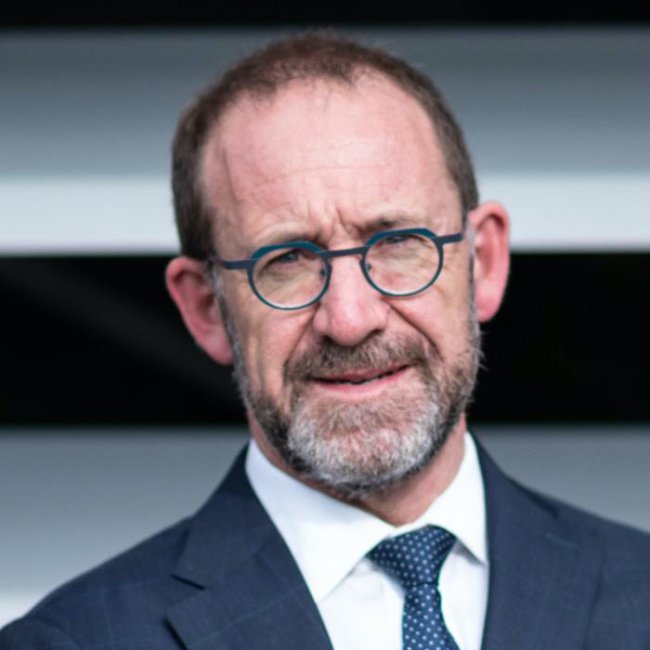
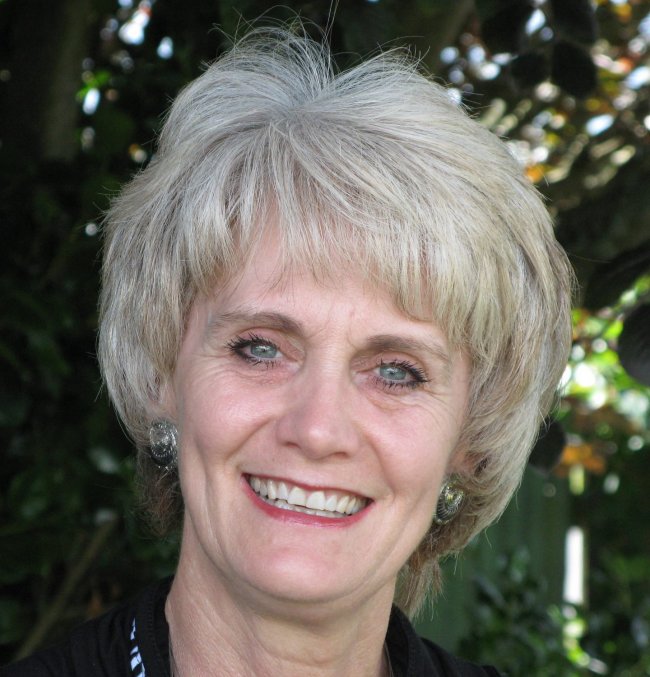
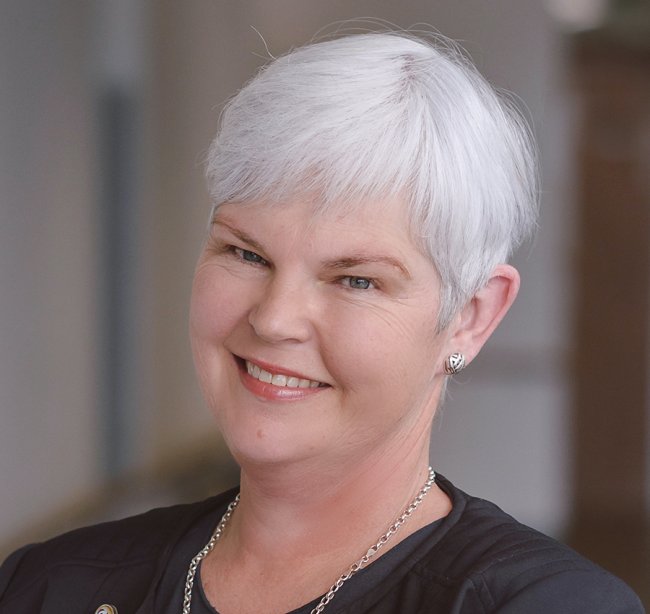
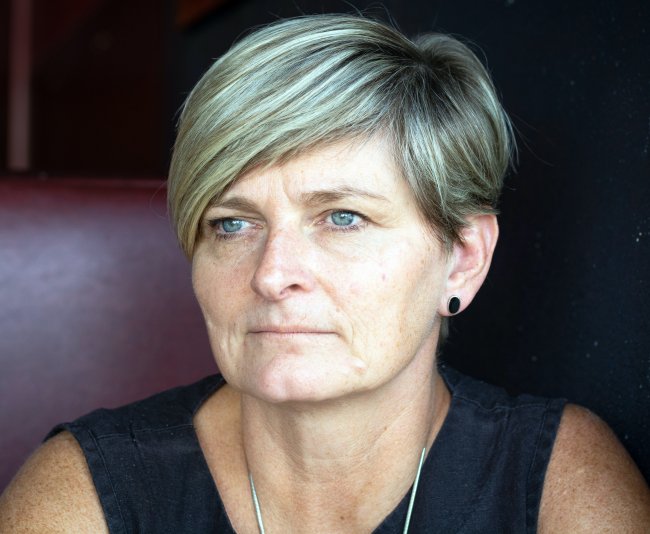
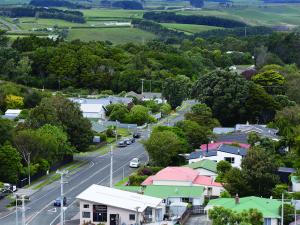
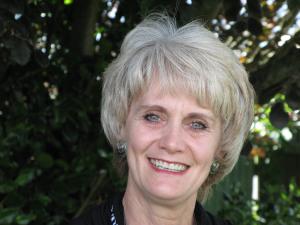




![Barbara Fountain, editor of New Zealand Doctor Rata Aotearoa, and Paul Hutchison, GP and senior medical clinician at Tāmaki Health [Image: Simon Maude]](/sites/default/files/styles/thumbnail_cropped_100/public/2025-03/Barbara%20Fountain%2C%20editor%20of%20New%20Zealand%20Doctor%20Rata%20Aotearoa%2C%20and%20Paul%20Hutchison%2C%20GP%20and%20senior%20medical%20clinician%20at%20T%C4%81maki%20Health%20CR%20Simon%20Maude.jpg?itok=-HbQ1EYA)
![Lori Peters, NP and advanced health improvement practitioner at Mahitahi Hauora, and Jasper Nacilla, NP at The Terrace Medical Centre in Wellington [Image: Simon Maude]](/sites/default/files/styles/thumbnail_cropped_100/public/2025-03/2.%20Lori%20Peters%2C%20NP%20and%20advanced%20HIP%20at%20Mahitahi%20Hauora%2C%20and%20Jasper%20Nacilla%2C%20NP%20at%20The%20Terrace%20Medical%20Centre%20in%20Wellington%20CR%20Simon%20Maude.jpg?itok=sUfbsSF1)
![Ministry of Social Development health and disability coordinator Liz Williams, regional health advisors Mary Mojel and Larah Takarangi, and health and disability coordinators Rebecca Staunton and Myint Than Htut [Image: Simon Maude]](/sites/default/files/styles/thumbnail_cropped_100/public/2025-03/3.%20Ministry%20of%20Social%20Development%27s%20Liz%20Williams%2C%20Mary%20Mojel%2C%20Larah%20Takarangi%2C%20Rebecca%20Staunton%20and%20Myint%20Than%20Htut%20CR%20Simon%20Maude.jpg?itok=9ceOujzC)
![Locum GP Helen Fisher, with Te Kuiti Medical Centre NP Bridget Woodney [Image: Simon Maude]](/sites/default/files/styles/thumbnail_cropped_100/public/2025-03/4.%20Locum%20GP%20Helen%20Fisher%2C%20with%20Te%20Kuiti%20Medical%20Centre%20NP%20Bridget%20Woodney%20CR%20Simon%20Maude.jpg?itok=TJeODetm)
![Ruby Faulkner, GPEP2, with David Small, GPEP3 from The Doctors Greenmeadows in Napier [Image: Simon Maude]](/sites/default/files/styles/thumbnail_cropped_100/public/2025-03/5.%20Ruby%20Faulkner%2C%20GPEP2%2C%20with%20David%20Small%2C%20GPEP3%20from%20The%20Doctors%20Greenmeadows%20in%20Napier%20CR%20Simon%20Maude.jpg?itok=B0u4wsIs)
![Rochelle Langton and Libby Thomas, marketing advisors at the Medical Protection Society [Image: Simon Maude]](/sites/default/files/styles/thumbnail_cropped_100/public/2025-03/6.%20Rochelle%20Langton%20and%20Libby%20Thomas%2C%20marketing%20advisors%20at%20the%20Medical%20Protection%20Society%20CR%20Simon%20Maude.jpg?itok=r52_Cf74)
![Specialist GP Lucy Gibberd, medical advisor at MPS, and Zara Bolam, urgent-care specialist at The Nest Health Centre in Inglewood [Image: Simon Maude]](/sites/default/files/styles/thumbnail_cropped_100/public/2025-03/7.%20Specialist%20GP%20Lucy%20Gibberd%2C%20medical%20advisor%20at%20MPS%2C%20and%20Zara%20Bolam%2C%20urgent-care%20specialist%20at%20The%20Nest%20Health%20Centre%20in%20Inglewood%20CR%20Simon%20Maude.jpg?itok=z8eVoBU3)
![Olivia Blackmore and Trudee Sharp, NPs at Gore Health Centre, and Gaylene Hastie, NP at Queenstown Medical Centre [Image: Simon Maude]](/sites/default/files/styles/thumbnail_cropped_100/public/2025-03/8.%20Olivia%20Blackmore%20and%20Trudee%20Sharp%2C%20NPs%20at%20Gore%20Health%20Centre%2C%20and%20Gaylene%20Hastie%2C%20NP%20at%20Queenstown%20Medical%20Centre%20CR%20Simon%20Maude.jpg?itok=Z6u9d0XH)
![Mary Toloa, specialist GP at Porirua and Union Community Health Service in Wellington, Mara Coler, clinical pharmacist at Tū Ora Compass Health, and Bhavna Mistry, specialist GP at Porirua and Union Community Health Service [Image: Simon Maude]](/sites/default/files/styles/thumbnail_cropped_100/public/2025-03/9.%20Mary%20Toloa%2C%20Porirua%20and%20Union%20Community%20Health%20Service%20in%20Wellington%2C%20Mara%20Coler%2C%20T%C5%AB%20Ora%20Compass%20Health%2C%20and%20Bhavna%20Mistry%2C%20PUCHS%20CR%20Simon%20Maude.jpg?itok=kpChr0cc)